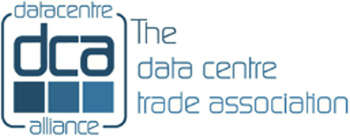GDPR & your privacy.
Your privacy as a member is important to us. Recently, rules surrounding privacy have changed, so we have created this manifest for you to read and accept.
It is not possible for you to be classed as an authentic member of the DCA unless you accept the terms, that includes but is not limited to the GDPR statement below.
Please read the privacy policy here.
Energy efficiency benchmarks for data centres
Categories: Energy Efficiency, Standards
Energy Efficiency Benchmarks for Data Centres
By Catherine Bischofberger
ISO and IEC produce many joint standards which specify how to improve the energy efficiency of information and communication technology (ICT). A number of these publications deal specifically with the energy consumption of data centres.

High-performance data centres, which process increasingly complex data such as predictive algorithms, can use up a lot of energy (photo: Wikimedia commons author: baltic servers.com)
Powerful predictive algorithms are no longer only the preserve of research labs, universities or the army. High-performance computing - the ability to process data and perform complex calculations at high speeds – is required to carry out tasks such as predict consumer behaviour for instance, track a developing storm or even analyze stock trends. Racks are stacked closely together to reduce periods of latency during intense parallel processing - a feature that is ubiquitous in high-performance data centres. Such installations call for more sophisticated power and cooling systems than conventional data centres and this can lead to higher energy consumption.
ISO and IEC joint work
ISO and IEC have a formed a joint technical committee (ISO/IEC JTC 1) to develop worldwide information and communication technology (ICT) standards for business and consumer applications. One of the ISO/IEC JTC 1 subcommittees is (SC) 39, which was set up to prepare standards on sustainability for and by IT, especially where data centres are concerned.
High-performance server networks not only require a lot of electrical energy to function, they also need power to run the cooling and air-conditioning devices which enable them to perform at their best. Routine energy management processes are implemented to reduce their overall energy and heat consumption.
Most estimates expect total electricity demand for ICT to accelerate in the 2020s, partly as a result of the increased power usage of data centres. Jay Taylor, who heads ISO/IEC JTC 1/SC 39, agrees. “The fact of the matter is that we have more data centres now than seven years ago and their number will continue to grow in coming years. And many high-performance data centres already consume as much energy as small cities.”
Metrics for energy consumption
Founded in 2012, ISO/IEC SC 39 initially worked on a global effectiveness measurement tool for data centres, called power usage effectiveness (PUE). “There were a number of organizations, such as The Green Grid or the Standard Performance Evaluation Corporation (SPEC), which were developing specifications for data centres, but they were all going down different routes. That’s how we identified a need for an international standard that could be applied across Asia, Europe and the US,” Taylor explains.
ISO/IEC SC 39 recently issued nine publications, most of which were technical specifications, part of the ISO/IEC 22237 series. “We developed these specifications based on the EN 50600 standard, published by the European Committee for Electrotechnical Standardization (CENELEC). EN 50600 gives comprehensive guidelines for the construction and operations of data centres in Europe. My view was that we should work within the framework of the ISO 14000 family of standards on environmental management, produced by ISO/TC 207. For instance, we wanted to include specifications relating to the operation of data centres in areas prone to earthquakes. We received a lot of input from our Japanese colleagues on that aspect. I would describe the ISO/IEC 22237 series as a set of guidelines which provides data centre operators and owners with a practical methodology they can use when they set up in different countries across the globe.”
ISO/IEC SC 39 is working to bridge the gap between the increasing use of computing power and the growing requirements for decarbonization. As Jay Taylor puts it, “We are trying to get equipment to consume less energy while producing useful work which could lead to our overall energy reduction.”
New standard for new metric
In 2020, the SC is planning to publish a new standard which specifies a server energy efficiency metric (SEEM). The future standard – ISO/IEC 21836 – is expected to enable stakeholders to measure the energy effectiveness of servers before procurement and installation, particularly for use in worldwide server energy effectiveness regulations and programmes.
The standard permits users to compare the energy effectiveness across different server networks which previous key performance indicators (KPIs), as specified in the ISO/IEC 30134 series, did not do.
+ 44 (0)845 873 4587
info@dca-global.org



